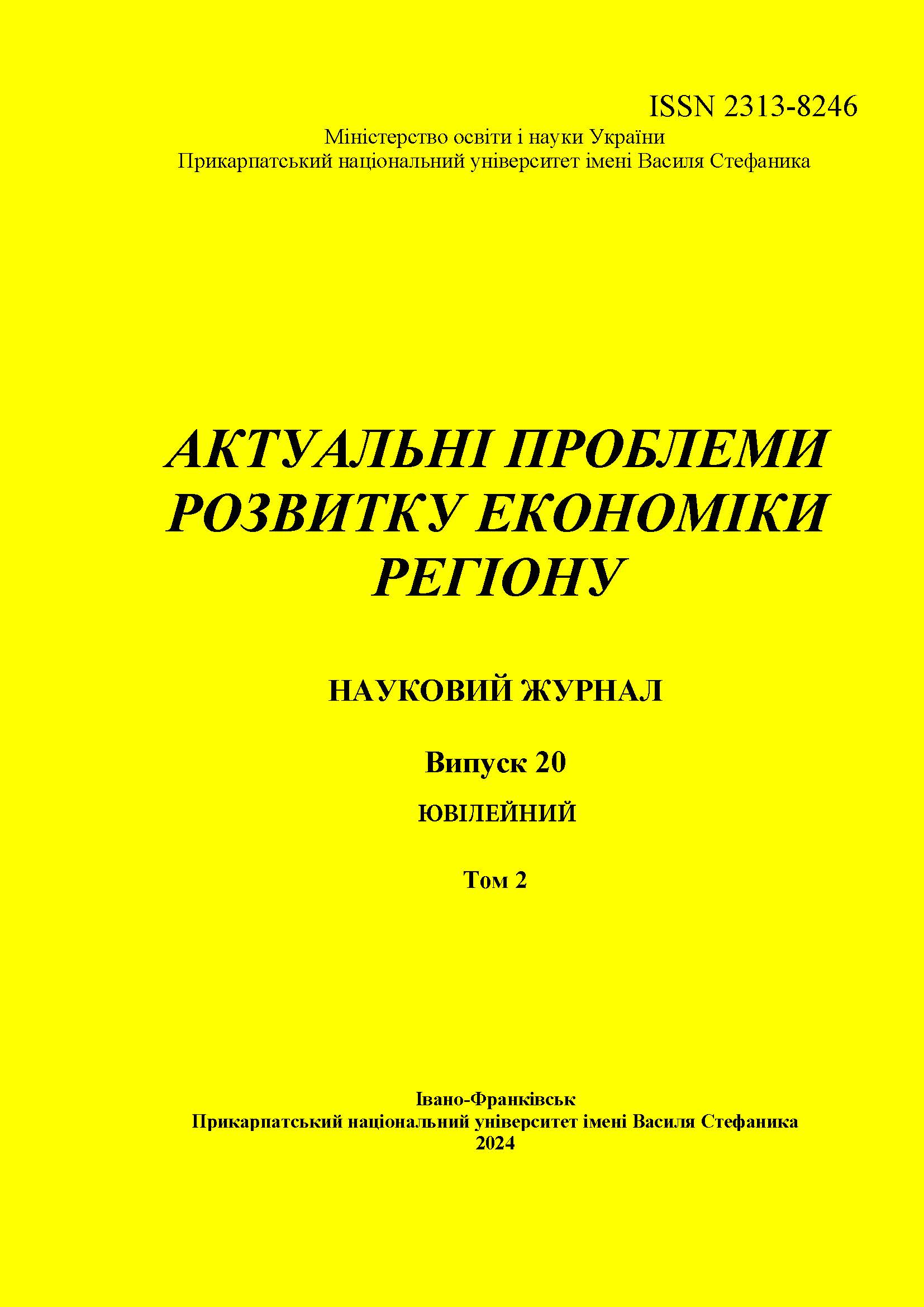THE POTENTIAL OF USING THE ARTIFICIAL INTELLIGENCE TECHNOLOGY IN THE ACTIVITIES OF CREDIT INSTITUTIONS
DOI:
https://doi.org/10.15330/apred.2.20.232-244Keywords:
potential, artificial intelligence, credit institutions, development, digitalization, banking institutions, digital technologyAbstract
In the article, theoretical and applied provisions of using the artificial intelligence technology in the activities of credit institutions are considered. This was done by analyzing the essence of this technology and the specifics of its use in the functioning of business entities. The history of the origin of this technology is considered in fragments, and its individual components are identified, without which it cannot exist, including the following: machine learning systems, deep learning, neural networks. This made it possible to further analyze certain types of the artificial intelligence technology and identify the following ones: reactive artificial intelligence technologies, limited memory technologies, theory of mind technologies, self-aware technologies.
The article focuses on the analysis of modern approaches of scientists and specialists in the field of the development of the artificial intelligence technology regarding the threats and benefits of its use in the economic system, and its impact on the current development of society. This made it possible to establish that the one of the most active areas, in which the potential of artificial intelligence is being actively used for the development today, is the financial services sector.
In the article, a thorough analysis of the application of the artificial intelligence technology is the functioning of credit institutions. In particular, the main areas of use of this technology in the work of these institutions were identified, namely: analysis of the borrowers' creditworthiness, automation of decision-making, security monitoring and fraud prevention, customer information support and automation of credit services, marketing activities to create personalized credit products, and search for areas for their sale to different groups of customers.
In the article, current trends in the use of chatbots by credit institutions are also analyzed, as this is the area in which these institutions most often use certain elements of the artificial intelligence technology. Accordingly, the advantages and disadvantages of using chatbots in the work of these institutions are specified. In addition, in the article, various modern cases of using the artificial intelligence technology by domestic and global credit institutions are examined. This made it possible to identify the main problems that hinder the use of the artificial intelligence technology in Ukraine by credit institutions.
References
Zhyvtsova, L.I. “Artificial intelligence: essence and development prospects.” Ukrainian Journal of Construction and Architecture, no. 3(015), 2023, pp. 66-71, DOI: 10.30838/J.BPSACEA.2312.140723.66.956.
WABOT -WAseda roBOT. Humanoid Robotics Institute, Waseda University, www.humanoid.waseda.ac.jp/booklet/kato_2.html. Accessed 5 May 2024.
“Over the next five years, technology and artificial intelligence could cut 26 million jobs worldwide.” Suspilne.media, suspilne.media/461798-si-ta-tehnologii-skorotat-26-mln-robocih-misc-po-vsomu-svitu-wef. Accessed 5 May 2024.
“Artificial intelligence took away the jobs of almost 4,000 Americans in a month.” Sundries, sundries.ua/shtuchnyi-intelekt-za-misiatsvidibrav-robotu-maizhe-u-4000-amerykantsiv. Accessed 5 May 2024.
“Musk said that artificial intelligence poses a risk to humanity.” UNIAN Information Agency, www.unian.ua/science/mask-zayaviv-shcho-shtuchniy-intelekt-predstavlyaye-rizik-dlya-lyudstva-12443025.html. Accessed 5 May 2024.
Cabinet of Ministers of Ukraine. On the approval of the Concept of the development of artificial intelligence in Ukraine. Decree, № 1556 dated 02.12.2020. Verkhovna Rada of Ukraine, zakon.rada.gov.ua/laws/show/1556-2020-%D1%80#Text. Accessed 5 May 2024.
“All Rights Reserved.” Juvo Mobile Inc. www.juvo.com/?lng=en. Accessed 5 May 2024.
“Conversational AI Products for Banking and Finance.” Kasisto, kasisto.com/products. Accessed 5 May 2024.
Dubyna, M., Popelo, O., Zhavoronok, A., Lopashchuk, I., and M.Fedyshyn. “Development of the credit market of Ukraine under macroeconomic instability.” Public and Municipal Finance, vol. 12, issue 1, 2023, pp. 33-47, http://dx.doi.org/10.21511/pmf.12(1).2023.04.
Rastikhina, O. “Chatbots for business. How to create and train an effective virtual assistant.“ Economic truth, 2020, www.epravda.com.ua/columns/2020/08/10/663837. Accessed 5 May 2024.
“The monobank team has developed a service that calculates risks for financial companies.” Minfin, minfin.com.ua/ua/2018/11/08/35557281/#:~:text=2018%2C%2012%3A45-,%D0%9A%D0%BE%D0%BC%D0%B0%D0%BD%D0%B4%D0%B0%20monobank%20%D1%80%D0%BE%D0%B7%D1%80%D0%BE%D0%B1%D0%B8%D0%BB%D0%B0%20%D1%81%D0%B5%D1%80%D0%B2%D1%96%D1%81%2C%20%D1%8F%D0%BA%D0%B8%D0%B9%20%D1%80%D0%B0%D1%85%D1%83%D1%94%20%D1%80%D0%B8%D0%B7%D0%B8%D0%BA%D0%B8%20%D0%B4%D0%BB%D1%8F%20%D1%84%D1%96%D0%BD%D0%BA%D0%BE%D0%BC%D0%BF%D0%B0%D0%BD%D1%96%D0%B9,%D0%9F%D1%80%D0%BE%20%D1%86%D0%B5%20%D0%BF%D0%B8%D1%88%D0%B5%20ain.ua. Accessed 5 May 2024.
“AI-Driven Credit Underwriting Software. “Company Zest AI, www.zest.ai. Accessed 5 May 2024.
“Mobile application “Albert, albert.com. Accessed 5 May 2024.
Official site FinAdviser, finadviser.com.ua. Accessed 5 May 2024.
Cabinet of Ministers of Ukraine, On the approval of the Concept of the State targeted scientific and technical program for the use of artificial intelligence technologies in priority sectors of the economy for the period until 2026. Decree, № 320-р, 13.04.2024, www.kmu.gov.ua/npas/pro-skhvalennia-kontseptsii-derzhavnoi-tsilovoi-naukovo-tekhnichnoi-prohramy-z-vykorystannia-s320130424. Accessed 5 May 2024.
Official site HSBC Griup, www.hsbc.com. Accessed 5 May 2024.
Dubyna, M., Bazilinska, O., Panchenko, O., Sadchykova, I., Kozlianchenko, A., and A.Tarasenko. “The Role and Prospects of the Use of Artificial Intelligence Technology in the Credit Activities of Banking Institutions.” Review of Economics and Finance, vol. 21, 2023, refpress.org/ref-vol21-a220. Accessed 5 May 2024.
Downloads
Published
How to Cite
Issue
Section
License

This work is licensed under a Creative Commons Attribution-NonCommercial-NoDerivatives 4.0 International License.
- Authors retain copyright and grant the journal right of first publication with the work simultaneously licensed under a Creative Commons Attribution NonCommercial NoDerivs 4.0 Unported License that allows others to share the work with an acknowledgement of the work's authorship and initial publication in this journal.
- Authors are able to enter into separate, additional contractual arrangements for the non-exclusive distribution of the journal's published version of the work (e.g., post it to an institutional repository or publish it in a book), with an acknowledgement of its initial publication in this journal.
- Authors are permitted and encouraged to post their work online (e.g., in institutional repositories or on their website) prior to and during the submission process, as it can lead to productive exchanges, as well as earlier and greater citation of published work (See The Effect of Open Access)


